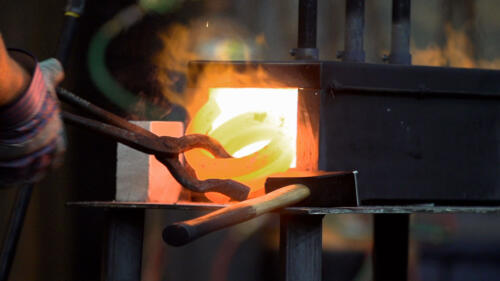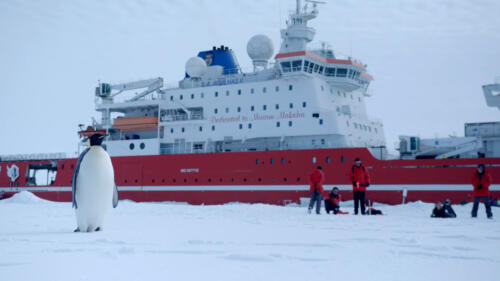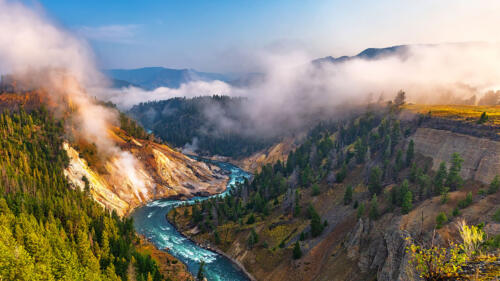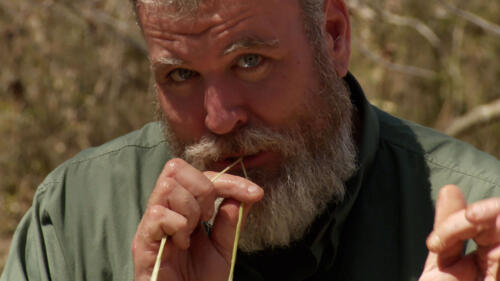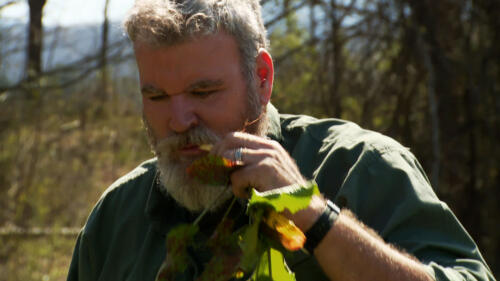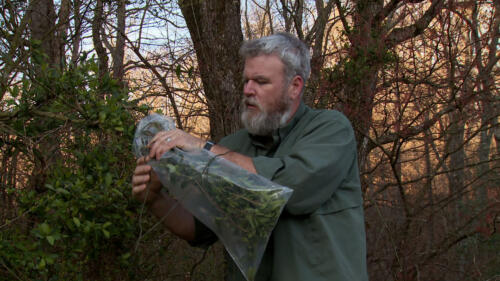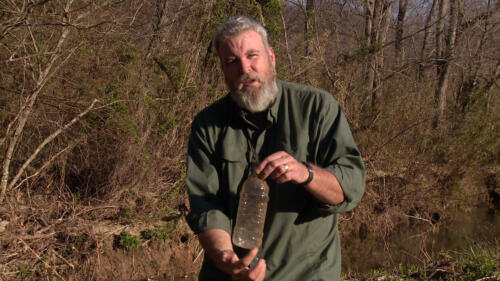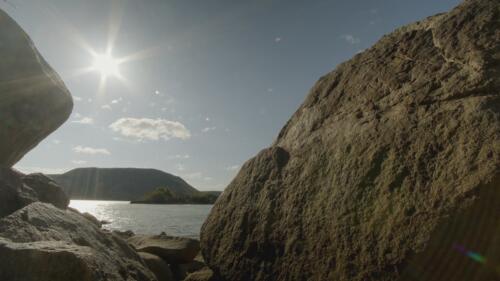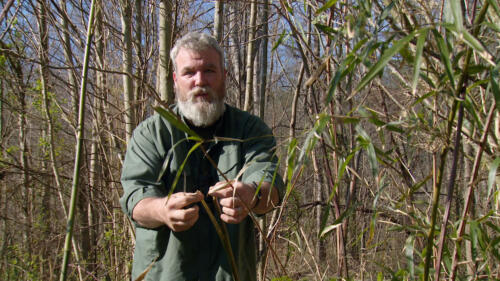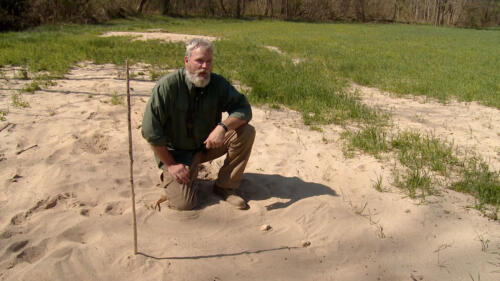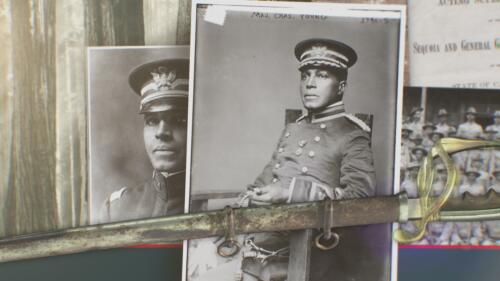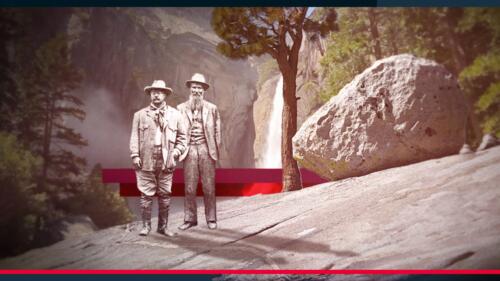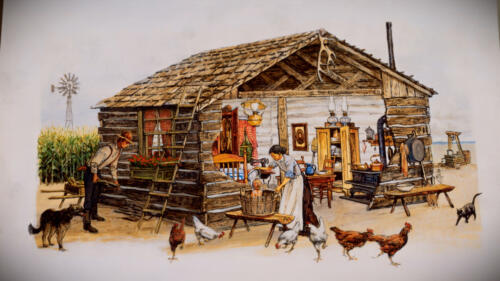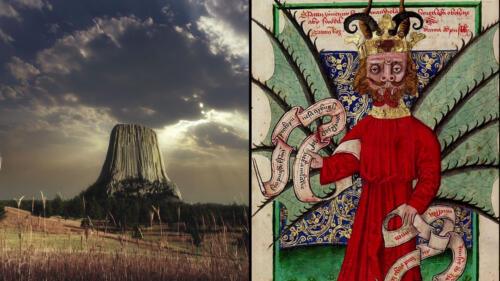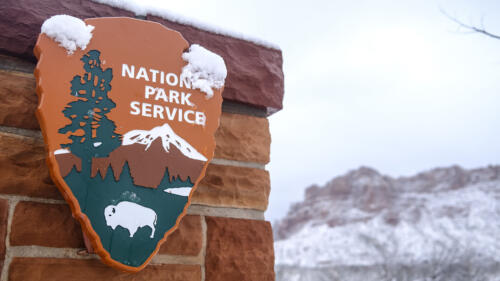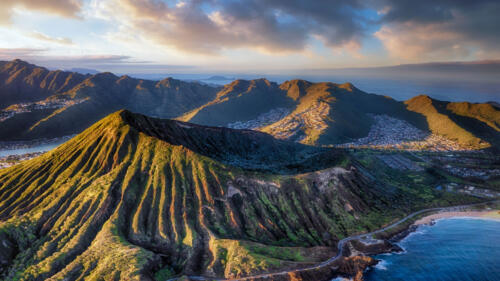

Outdoors & Adventure
The great outdoors has shaped history and history has shaped the outdoors. Explore stories and video about humans in nature—from survival to exploration to adventure.
History Outdoors
The Man Who Jumped From the Edge of Space
In 1960, Joe Kittinger ascended more than 19 miles above Earth—then leapt.


Yosemite's Original 'Firefall' Was a Man-Made Cascade of Flaming Coals
Workers raked burning coals over a cliff edge to regale Yosemite visitors.

5 Adventure Books That Plunge You Into Frozen Frontiers
These gripping tales recount survival in Earth’s coldest realms.

How a Renaissance Poet's 1336 Climb Inspired Generations of Hikers
Petrarch's 1336 account of his ascent of Mont Ventoux became a touchstone for those who love to climb peaks.

“Wilderness is not a luxury but necessity of the human spirit.”
– Edward Abbey
Earth's Extremes

Residents in these five states have come up with creative traditions to beat the chill.

The longest cave system winds for more than 400 miles, but others on the list haven't even been fully explored yet.

The exact location of the ancient, gnarled bristlecone pine is kept secret for its protection.

In 1934, wind gusts of 231 miles per hour roared over the top of Mount Washington, rattling the weathermen who managed to record it.
Mountain Men
Tom Oar's Secrets From the Wild
Tom Oar shares his hard-earned survival secrets forged through a lifetime of experience living in the wild.
Digital Exclusive

From forge to finish: everything you need to craft blades like a pro.
Featured Video
How Devil’s Tower Got Its Name
Devil's Tower is one of the most recognizable features of the American landscape, but not everyone agrees on what it should be named.
At the Bottom of the Earth
The Stunning Survival Story of Ernest Shackleton and His Endurance Crew
The discovery of Ernest Shackleton's ship at the bottom of Antarctica's Weddell Sea recalls a grueling expedition when men endured entrapment, hunger, frigid weather, angry seas—and near madness.


What Did Antarctica Look Like Before It Was Frozen?
Though now almost fully covered by ice, Antarctica once hosted lush forests and a plethora of wildlife—including dinosaurs.

The Expedition That Proved Antarctica Was a Continent
Charles Wilkes' discoveries redrew the map of the world.

Hitler’s Secret Expedition to Antarctica
In preparation for war, Hitler wanted to find substitutes for fat-based products—including margarine—in case imported sources were cut off.
Man vs. Wild

Playlist
America's National Parks
America's national parks were established to protect the country’s most beautiful natural landscapes for all to enjoy.
How a Camping Trip Created our National Parks
When John Muir and Teddy Roosevelt spent three nights in Yosemite, it would soon pave the way for a National Park Service.
Landmarks of America

What Is the Most Iconic American Landmark?
Play our new bracket game and put the contenders—from the Grand Canyon to the Gateway Arch—head-to-head.
Yellowstone's stunning natural beauty inspired the 19th-century push to set aside the land, where Indigenous people had been present for millennia.

A little-known chamber concealed behind the head of Abraham Lincoln was intended to contain a shrine to America.

You know these sites, but have you noticed these details?
Digital Exclusive

Experts offer tips and tricks in "How to Survive Alone."
Explore related articles

Workers raked burning coals over a cliff edge to regale Yosemite visitors.

Residents in these five states have come up with creative traditions to beat the chill.

In 1960, Joe Kittinger ascended more than 19 miles above Earth—then leapt.

These gripping tales recount survival in Earth’s coldest realms.

Traditional homes balanced resilience and respect for the land.

The cause of the 1975 wreck remains shrouded in mystery.

Analysis of Ernest Shackleton's ship, Endurance, suggests it was never really ready for an Antarctic expedition.

So what if they were drafty and crawling with bugs?

A 3,000-year-old fresco from an accountant's tomb depicts hunting, fishing and outdoor feasting.

With the Aqua-Lung, the French oceanographer and filmmaker realized his dream of creating a system to swim and breathe freely underwater.

Since New England’s forests regenerated in the 1800s, visitors have been ogling its patchwork of fall colors.

The lightweight, paddle-powered boats have served a variety of purposes over thousands of years.

The English typist-turned-swimmer Mercedes Gleitze swam from Spain to Morocco in 1928 but was best known for another marathon-distance swim.

Petrarch's 1336 account of his ascent of Mont Ventoux became a touchstone for those who love to climb peaks.

A plane crash...self-amputation...438 days at sea.

Think of it as a mountain man convention.

Some of the most distinctive man-made structures in the National Park System are meant to look like man didn’t make them at all.

Artificial flies were first mentioned in 200 A.D., but the sport really took off in the 1800s.

Earl Shaffer, who had seen heavy combat and lost his best friend in WWII, set off as the first thru-hiker in 1948.

Feeling the heat? See if you're living in one of the historically steamiest states in the country.

The exact location of the ancient, gnarled bristlecone pine is kept secret for its protection.

From Asia to the United States, 'eighth wonders' span the globe.

From boots to sleeping bags, see how equipment that Edmund Hillary and Tenzing Norgay used in the first ascent of Mount Everest compares to what climbers use today.

Missionaries laid the foundation for communities and governance in the American frontier.

After Lewis and Clark's famed journey, these other explorers set out to document what lay beyond the frontier.

The 1980 Mount St. Helens eruption wrecked landscapes and human life, but left lessons in its wake.

Charles Wilkes' discoveries redrew the map of the world.

From summoning rain to bombing the sky, these efforts showcase one of humanity’s oldest obsessions.

The longest cave system winds for more than 400 miles, but others on the list haven't even been fully explored yet.

A single giant sequoia could supply 500,000 board feet of lumber, a bonanza for profit-hungry logging companies—or so it was thought.

The first recorded hurricane forecast was issued by a Jesuit priest in 1875. A series of critical tools have since refined the science.

Only five U.S. lakes, most of them in the mountainous West, descend more than 1,000 feet into the watery depths.

In 1909 African American Matthew Henson trekked with explorer Robert Peary, reaching what they claimed was the North Pole. Who got there first?

Yellowstone's stunning natural beauty inspired the 19th-century push to set aside the land, where Indigenous people had been present for millennia.

In the early 1920s, 25-year-old Ada Blackjack survived two years on the frigid Wrangel Island after a failed expedition to claim the island for Canada.

Our human ancestors' big, creative brains helped them devise tools and strategies to survive harsh climates.

Hungry bears—whether grizzly, black, brown or polar—can be shockingly brutal.

The discovery of Ernest Shackleton's ship at the bottom of Antarctica's Weddell Sea recalls a grueling expedition when men endured entrapment, hunger, frigid weather, angry seas—and near madness.

Indigenous people routinely burned land to drive prey, clear underbrush and provide pastures.

On the heels of the Great Depression, the federal government under FDR hired young people to work on projects across the country. Here’s what the Corps got done.

Feral swine. Rodents of unusual size. And a python that swallowed three deer.

They've eaten practically every mammal in sight—and have no natural predators.

In 1804, Lewis and Clark set off on a journey filled with harrowing confrontations, harsh weather and fateful decisions.

Why go to the trouble of tracking and killing an animal when a saber-tooth cat can do the job instead?

The explorers not only produced maps from their 1804-1806 expedition to the American West, they also recorded some 122 animals new to science.

For millennia, six-legged soldiers have been conscripted to torment enemies.

Category 5 hurricanes pack the strongest winds but only a handful have been recorded making landfall in the United States.

These people went off the beaten track. Then things went horribly wrong.

The Tri-State Tornado claimed nearly 700 lives.

The pioneers hoped to shave 300 miles off their journey. But the route they took to California had never been tested.

One storm left an estimated 8,000 dead in its wake, while an epic flood carried human bodies some 350 miles away.

Historically, crocodile attacks are 100 times deadlier than shark attacks—and far more frequent—ranging from harrowing individual confrontations to a mass attack on World War II soldiers.

Famed hunter-adventurer Steven Rinella shares seven ways to safely navigate the backcountry.

Spies and scouts, mothers and homestead keepers, women quietly made their mark on America's changing western frontier.

It killed 100,000 people in the direct impact. But it led to tens of millions more deaths later.

The U.S. Weather Bureau got the forecast completely wrong.

We trudge back in time to revisit some of the worst blizzards in U.S. history.

From a 'bear lunch counter' to a less-than-faithful Old Faithful, here are some surprising things to know about America’s first national park.

After losing the 1912 presidential election, Roosevelt struck out on a treacherous expedition to navigate an unmapped river in the Amazon.

In the early 1910s, explorers Roald Amundsen and Robert Falcon Scott engaged in a frantic, and ultimately tragic, race to be the first man to reach the South Pole.

Explore 10 surprising facts about the man often called the “King of the Wild Frontier.”

It wasn’t safe to go back in the water of the Jersey Shore in 1916, as a series of deadly shark attacks forever changed Americans’ attitudes toward the sea creatures.

Find out more about the lives of six adventurers who made their mark on the American frontier.

Check out nine surprising facts about the route that once served as the gateway to the American West.

Explore 10 surprising facts about one of America’s first and greatest expeditions of discovery.

10 surprising facts about the UNESCO World Heritage Site.

The legendary frontiersman's background holds some surprises, including his real opinion on coonskin caps and his poor track record in real estate.

From a climate-changing volcanic eruption to a mysterious explosion in Siberia, learn the stories behind six weird weather events that made their mark on history.

Look back at the 1925 life-or-death mission that inspired the annual Iditarod Trail Sled Dog Race.

